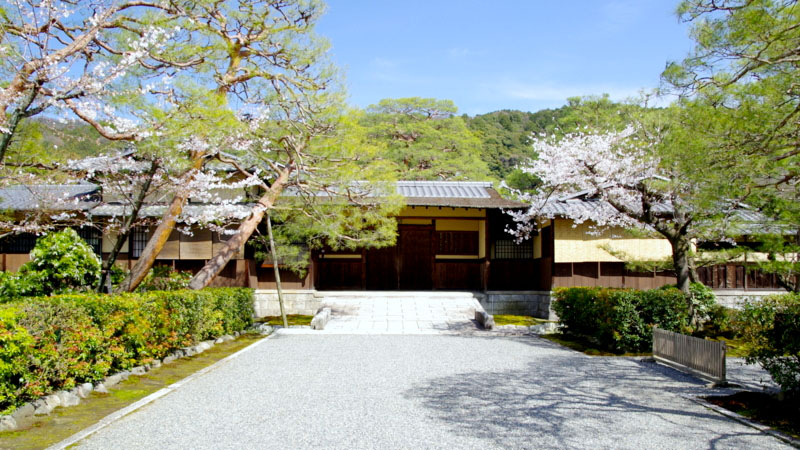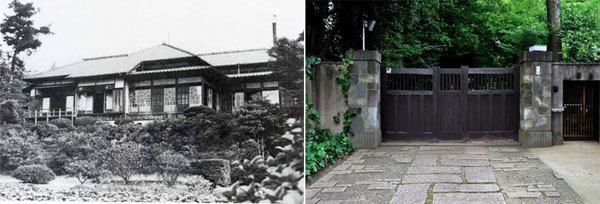Nanzen-ji: Japan’s most expensive and exclusive residential area

London has Kensington Palace Gardens, Hong Kong has Pollock’s Path and Monaco has Avenue Princesse Grace. Japan’s most expensive and most exclusive neighbourhood is not in Tokyo, but in the grounds of a temple in the historic former capital of Kyoto.
Nanzen-ji is a Zen Buddhist temple that was first established in 1291 by Emperor Kameyama on the site of one of his former palaces. During the anti-Buddhist movement at the beginning of the Meiji Restoration, Nanzen-ji’s grounds and sub temples were seized by the government, subdivided and sold off to private interests. Between the Meiji period and early Showa period, Japanese nobility began to build luxurious holiday homes with expansive and carefully designed Japanese gardens.
Competition amongst the elite was strong, with each one trying to build a bigger and grander villa than the other. Today, 15 of the original villas remain. Many of these villas are still owned by descendants of the original owners, or are held by some of Japan’s top companies and are not open to the public. These estates are worth as much as 100 million USD, but are so tightly held that, no matter how much money you may have, the area cannot be bought into at any price.Read more
Historic Japanese villa in NY looking for new home in Japan
 The current owner of a historic traditional Japanese house in upstate New York wants to relocate the home to Japan and is seeking a new owner.
The current owner of a historic traditional Japanese house in upstate New York wants to relocate the home to Japan and is seeking a new owner.
The ’Pine and Maple Palace’ was initially exhibited at the St. Louis World Fair in 1904. It was modelled in a style of architecture dating from the Momoyama period (late 1500s), but with some western features. After the fair, Emperor Meiji donated the villa to Dr. Jokichi Takamine, a successful chemist who had emigrated to the US. Takamine relocated the villa to his summer home in upstate New York. In 1909, Prince Kuni Kuniyoshi and Princess Kuni stayed in the villa during a visit to the US. The house was sold upon Takamine’s death in 1922. Read more
Suginami-ku buys historic villa for 3.1 billion Yen

Suginami ward in Tokyo has purchased the historic Tekigai Villa in Ogikubo 2 Chome for 3.1 billion Yen and plans to preserve the house and restore its gardens.
Tekigaiso was built in 1927 and designed by architect Ito Chuta. Ito was a leading architect in early 20th century Imperial Japan and had designed the original Meiji Jingu Shrine, the Okura Museum of Art near Hotel Okura in Akasaka, and the Tsukiji Hongan-ji Temple.Read more
Tohoku’s traditional homes slowly vanishing

Repair bills up to 100 million Yen or more
Yoichi Haryu, 57, owns a 2-storey home and storehouse in Wakabayashi-ku, Sendai City. The buildings date back to the late Meiji ~ early Showa era. The 2011 earthquake caused the beams to twist and bend and the wooden posts to twist and come unstuck.Read more
Villa in Suginami-ku saved from demolition
 Plans are underway to convert the private residence of a former Prime Minister, Prince Fumimaro Konoe, into a public garden. The local Suginami City is looking into purchasing the 6,000 sqm grounds and converting them into a public garden with a planned opening in 2017.
Plans are underway to convert the private residence of a former Prime Minister, Prince Fumimaro Konoe, into a public garden. The local Suginami City is looking into purchasing the 6,000 sqm grounds and converting them into a public garden with a planned opening in 2017.
Named 'Tekigaiso', the house was built in a traditional Japanese style in 1927. The total floor area of the house is approximately 500 sqm (5,380 sqft). Prince Konoe purchased the property in 1937. In October 1941, he discussed war efforts in the house's drawing room with Hideki Tojo, general of the Imperial Japanese Army and Prime Minister from late 1941 to 1944. Konoe later committed suicide in his library in 1945, and Tojo was sentenced to death for Japanese war crimes in 1948.Read more
Free farmhouses for evacuees
 A new site called "Kominka Net" is providing a listing service for owners of empty Japanese farmhouses (or kominkas) to offer them free of charge as temporary accommodation to evacuees of the March 11 Tohoku Earthquake, Tsunami and Nuclear Disaster.Read more
A new site called "Kominka Net" is providing a listing service for owners of empty Japanese farmhouses (or kominkas) to offer them free of charge as temporary accommodation to evacuees of the March 11 Tohoku Earthquake, Tsunami and Nuclear Disaster.Read more
